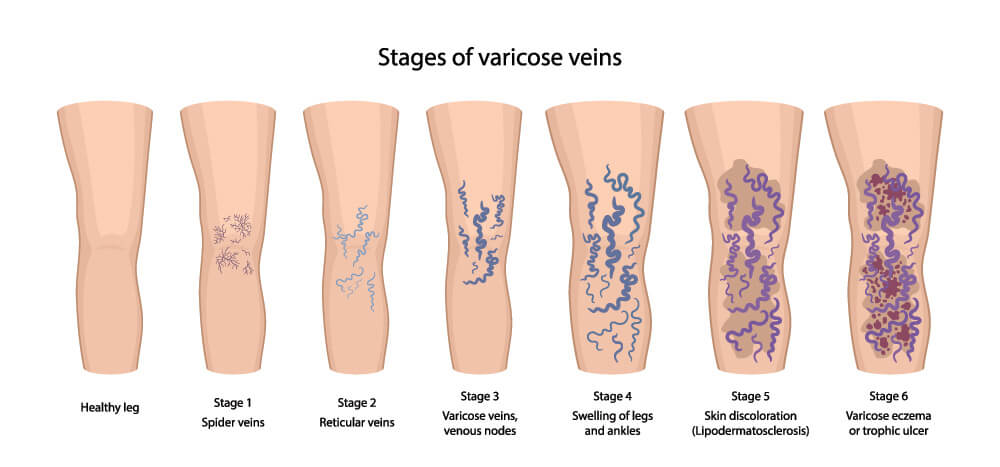Vein Care
Northwest Vein & Aesthetic Center’s Board – Certified Vascular Surgeons Specialize in Vascular and Venous Disease, Including But Not Limited to:
Leg Pain and Venous Disease
Your vascular (circulatory) system is comprised of veins and arteries. Arteries carry blood from the heart to the rest of the body, while veins return blood back to the heart. Various contributing factors such as genetics, obesity, pregnancy and other risk factors can disrupt blood flow within your venous system. This disruption of proper blood flow in the veins is generally the underlying cause of legs that feel fatigued, painful, swollen and/or restless in millions of women and men who suffer from venous disease. If left untreated, symptoms can become increasingly painful and debilitating, and surface veins, like bulging, twisted varicose veins, may begin to develop in the legs. Or you may experience no symptoms other than thin, blue-red vessels on your legs, which simply pose a cosmetic concern.

Regardless of the medical or aesthetic nature of venous disease, there is a distinct correlation between discomfort and fatigue in your legs and visible surface veins in the affected area. These symptoms and conditions can be managed if treated in a timely manner, so it is important to see a vein specialist sooner rather than later should you experience any of these signs. Early diagnosis and treatment prevents the progression of venous disease and alleviates leg pain and unsightly veins. Today’s vein treatment options also make treatment more effective, convenient, and comfortable than ever.
Vein Anatomy & Implications for Venous Disease
Three classes of veins are affected by venous disease and determine the course of action for treatment.
Superficial Venous System
Veins in the superficial system are most commonly associated with varicose veins and venous reflux disease in the lower extremities. There are two primary superficial veins: the Small Saphenous Vein (SSV) and the Great Saphenous Vein (GSV). Venous reflux disease that goes unaddressed for long periods of time may not only become more debilitating, but can threaten proper blood flow in the perforating and deep venous system as pressure builds, vein valves malfunction and vein walls distend.
Perforator Veins
Malfunctioning perforator veins contribute to 60% of cases of venous reflux disease in patients who suffer from venous ulcers- active, non-healing wounds in the mid-thigh region and near the ankles. Perforator veins contain one-way valves, which serve to connect the superficial venous system to the deep venous system.
Deep Venous System
Deep vein thrombosis (DVT) is clotting that can occur in the veins of the deep system. This poses a dangerous threat as this clotting blocks blood from flowing to the heart. Clot segments can also break off and travel to the heart and lungs, causing pulmonary embolism (PE). Located within the muscle fascia, these veins of the deep venous system account for approximately 90-95% of venous blood return to the heart.
Veins can pose a variety of medical or cosmetic concerns throughout the body. Northwest Vein & Aesthetic Center also offers therapies to address hand and arm veins and other vascular conditions. A consultation with our vein care experts will help to develop a treatment plan customized for you.
To learn more and see whether you are a candidate for vein treatment, contact our office and schedule a consultation today.
